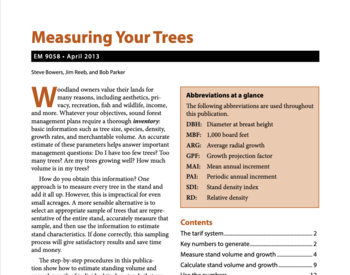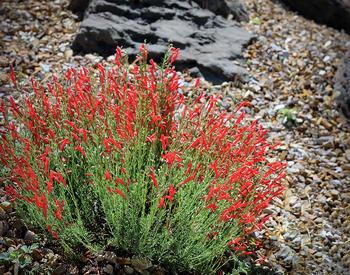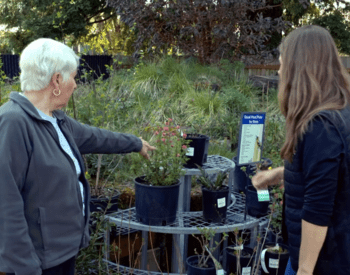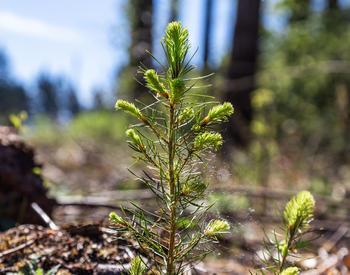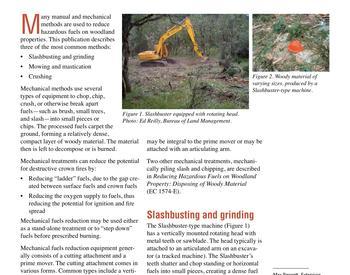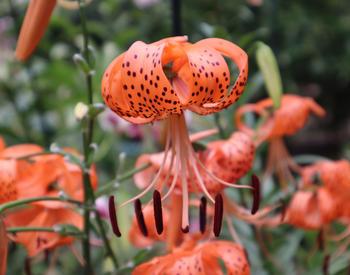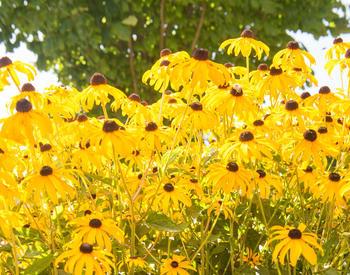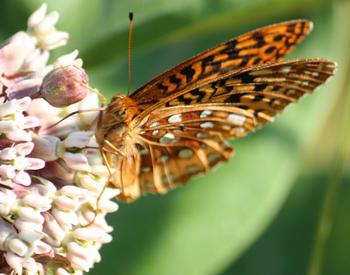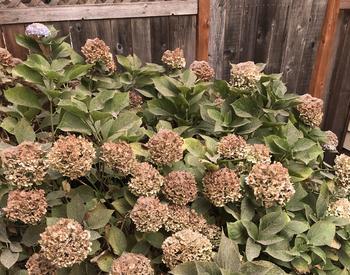In 2020, Oregon faced the worst series of fires in the state’s history. And it seemed to come out of nowhere. It was nice on Labor Day and then the smoke appeared. The skies turned the most foreboding shade of red. Thousands of people were evacuated from their homes.
In the midst of it, OSU Extension received questions from gardeners and the public wondering about the fires' effects on bees. People noticed that the bees had suddenly stopped flying. People wondered whether honey bee colonies were being choked by the smoke. In spite of all the mayhem and loss, people wanted to know, "Will the bees be OK?"
Let's take a look what is known about the effect of forest fires on bees, how bees respond to the land ravaged by fire and how you can help bees while also protecting your property from future fires.
Honey bee colonies
The 2020 fires were disruptive to the state’s 80,000 bee colonies. A number of apiaries were at risk of being consumed by the advancing flames. If you recall, 10,000 colonies were lost to the massive brush fires in New South Wales, Australia, in 2019-2020. In California, large apiaries have been lost to fire.
Fires move quickly and an apiary can turn into a pile of ash in hours. But even among surviving colonies, beekeepers struggled to get to their apiaries ready for winter, since conditions were unsafe for beekeepers to work and manage their colonies. These preparations are particularly important to ensure high colony survival over the next five months.
Wild bee nests
Later in the fall, most of the state's native bees had completed their reproduction and were hunkering down in nests for winter. But the susceptibility of those nests depends on where they were located. About 70% of our bee species nest in underground chambers. While soil temperatures can be very hot directly at the surface of a fire, they can fall to normal temperatures just 4 inches down.
Although we don't exactly know the average depth our bees nest in Oregon, a global survey estimated that over 75% put their young in chambers deeper than 4 inches. So, most of these bees won’t even notice the fire.
But around 30% of our bee fauna nests above ground in twigs and stems, including small carpenter bees, mason bees and leafcutting bees. Nests of these bees that are not directly burned will likely overheat and die. Research by the OSU Forest Animal Ecology Lab, for example, noticed a conspicuous absence of typically common stem-nesting small carpenter bees five years after the big Douglas Complex Fires in southern Oregon.
Smoke and bee behavior and physiology
Many people noticed something was wrong with the bees when the smoke rolled in; they suddenly weren’t visiting the flowers like they were when it was clear. One reason is that smoke has lowered temperatures and bees just aren’t as active when it’s cooler. A second answer comes from a Swedish research group that studied the qualities of light around forest fire haze in Alaska.
Many insects, including bees, use the pattern of polarized light in the sky as a kind of compass to know where they are going. These patterns are invisible to us, but appear to bees as varying levels of polarized light in the sky. Bees use these gradations in polarized light as guideposts to navigate from their nest to flowers and back. These patterns are maintained even when it's cloudy. But apparently, this pattern gets very distorted once that red haze sets in. Most significantly, the amount of polarized light in the sky can fall to levels below what a bee can discern, but also the pattern shifts.
Essentially, the strength of the polarization "compass" that bees use not only gets weaker, but it also points the bees in a different direction than normal. Getting to a flower gets to be a very hard task.
The ash itself may interfere with the ability of bees to breathe, smell, taste, as well as have other effects on their physiology. Although there is very little research on these effects, one group of researchers observed that when they exposed butterflies to simulated smoke conditions, the ash particles didn’t work their way into the butterfly respiratory system, but it nonetheless reduced the survival and growth rate of caterpillars. They interpret their results to mean that the ash isn’t interfering with breathing as much as it's poisoning the larvae as they consume the toxic material contained in the ash.
Post wildfire effects
OK. But there is a bright spot in all this gloom. Very few bees live in closed canopy forests. For this reason, bee diversity and abundance typically increases in the years following a fire.
Think of it — there is a huge flush of flowering forbs and shrubs that puts thousands of acres of new bee food in the landscape in the span of a few years while also creating open habitat in areas that were previously closed canopy forest. This was certainly the case following the massive 2013 Douglas Fire Complex in southern Oregon.
As we alluded to earlier, the OSU Forest Animal Ecology Lab surveyed these burned areas after four and five years following the fire. Remarkably, in areas where the fire was most severe, bee abundance and species richness were the highest. The lab also found that the blue orchard bee was able to rear its offspring across the gradient of fire severity and produced more females at higher fire severity levels.
One reason for this boost was undoubtedly caused by the fact that the diversity of the flowering plant community that supported these bees was also enhanced by high intensity fires; another was that the open areas had more favorable temperatures for bee foraging. Their work suggests that periodic forest fires are part of a regular pattern of success of bee communities across the state, and that wild bees help post-fire habitats return to functioning ecosystems.
“How can I help?”
After things return to some semblance of normality, it's time to think about landscaping for bees in a way that is “fire safe.” That means if people live in fire-prone areas, they should practice fire-resistant landscaping, using plants that feed bees but do not add to the fuel load. And it means planting in a way that ensures a defensible space around your home. OSU Extension has a great publication to help you balance fire preparedness and planting for bees.
Read more
Cane, J.H. and Neff, J.L., 2011. Predicted fates of ground-nesting bees in soil heated by wildfire: thermal tolerances of life stages and a survey of nesting depths. Biological Conservation, 144(11), pp.2631-2636.
Detweiler, A.J. and Fitzgerald, S.A., 2006. Fire-resistant plants for home landscapes: Selecting plants that may reduce your risk from wildfire. OSU Extension Catalog PNW 590
Evangelista, C., Kraft, P., Dacke, M., Labhart, T. and Srinivasan, M.V., 2014. Honeybee navigation: critically examining the role of the polarization compass. Philosophical Transactions of the Royal Society B: Biological Sciences, 369(1636), p.20130037.
Galbraith, S.M., Cane, J.H., Moldenke, A.R. and Rivers, J.W., 2019. Wild bee diversity increases with local fire severity in a fire‐prone landscape. Ecosphere, 10(4), p.e02668.
Hegedüs, R., Åkesson, S. and Horváth, G., 2007. Anomalous celestial polarization caused by forest fire smoke: why do some insects become visually disoriented under smoky skies?. Applied Optics, 46(14), pp.2717-2726.
Garvey, K.K. 2020. The Bee People, The Bees, and The Fires, UCANR.
Love, B.G. and Cane, J.H., 2016. Limited direct effects of a massive wildfire on its sagebrush steppe bee community. Ecological Entomology, 41(3), pp.317-326.
Tan, Y.Q., Dion, E. and Monteiro, A., 2018. Haze smoke impacts survival and development of butterflies. Scientific Reports, 8(1), pp.1-10.





